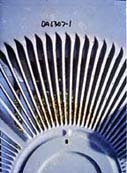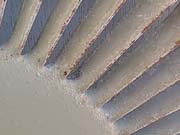Field Tests Show Pre-Painted Cut-Edge is More Durable Than Post-Painted








The study findings conclude that cut edge protection of pre-painted parts has repeatedly proven to be significantly better than post-painted ones because of the uniformity of treatment and film thickness (Photos 5-8). With proper selection of paint and substrate, a pre-painted part should provide a superior, cost-effective product in corrosion resistance, appearance and durability as compared to parts painted using other paint application methods.
For more information about this study, or converting to pre-painted metal, visit www.coilcoatinginstitute.org or call the NCCA at 216/241.7333.
About Pre-Painted Metal
Pre-painted metal sheet has touched every aspect of daily life over the past 30 years. Its versatility allows it to be used almost everywhere - on building exteriors and interiors, appliances, HVAC, furniture, automotive, etc. It is functional and durable, and can be combined with high-performance paint systems with an unlimited spectrum of colors and an array of properties. Designs can be eye appealing - simple or complex - without affecting long-term durability, corrosion and mar resistance, or functionality.These conversions to cost-effective, quality-enhanced pre-painted products occur almost daily from costly, labor-intensive and inefficient post-paint systems (electrocoat, spray and powder). Long-term durability is a key property of any painted metal product. In particular, protection of a cut or exposed edge is critical, no matter what type of paint application method.
Looking for a reprint of this article?
From high-res PDFs to custom plaques, order your copy today!






